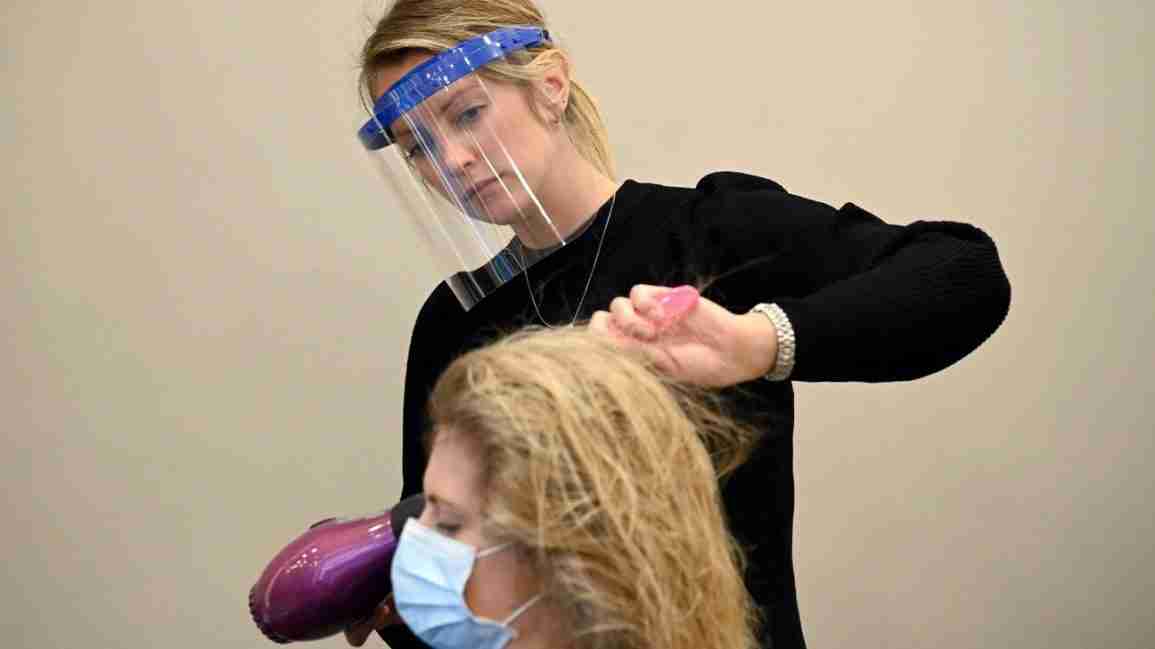
- Face masks remain at the core of the CDC’s recommendations for protecting yourself and others against COVID-19.
- Some people are looking at plastic face shields as an alternative.
- Experts say they can provide protection to the wearer. However, it’s not known exactly how well they protect people compared to face masks.
- Wearing them along with a face mask is recommended as the best way to protect yourself.
All data and statistics are based on publicly available data at the time of publication. Some information may be out of date.
Although the Centers for Disease Control and Prevention (CDC) continues to make face masks one of its primary recommendations for preventing the transmission of SARS-CoV-2 — the virus that causes COVID-19 — some people are turning to plastic face shields for protection.
Plastic face shields address some of the objections that people may have to wearing face masks, such as being hot and restrictive to breathing comfortably.
The question remains, however, whether they’re as effective as face masks.
Also, are there instances when they might be an acceptable alternative, for example when people have breathing difficulties due to preexisting conditions?
According to Dr. Michael B. Edmond, MPH, MPA, MBA, chief quality officer and associate chief medical officer for University of Iowa Health Care, and clinical professor of infectious diseases at the University of Iowa Carver College of Medicine, plastic face shields can reduce the risk of contracting the virus.
“The primary mechanism of transmission of COVID appears to be via droplets,” he said.
“Face shields are excellent at preventing droplets from coming into contact with the nose, mouth, and eyes, which are the body sites that the virus enters to establish infection,” Edmond added.
Dr. Joy Henningsen, clinical assistant professor, VAMC Section, at the University of Alabama at Birmingham School of Medicine, however, noted that, “we don’t have any data yet about whether or not face shields alone can help prevent the spread of the novel coronavirus from an infected person.”
“But, they may protect the wearer from an infected person when used with a mask,” she said.
While plastic face shields can provide some protection to the wearer against contracting the virus, we asked our experts how effective they are compared to face masks.
At this point, we simply don’t know, Edmond said. There are no published studies making the comparison.
He did, however, point to a not yet published study that found that face shields could provide better protection than face masks in protecting the wearer from the cough of a person 24 inches away.
Henningsen, however, pointed to another study that was done following an outbreak of COVID-19 in Switzerland. In this study, none of the people wearing masks tested positive for the virus. Several of the people wearing only face shields, however, did test positive.
Her conclusion? Face shields are a good supplement to face coverings, but should not be used in their place.
“There’s no such thing as too many weapons against the novel coronavirus,” said Henningsen. “The more protection, the better.”
“Face coverings, regular hand washing, physical distancing, and staying home as much as possible are very good tools. Add a face shield to all of those requisite practices and you go from ‘good’ to ‘great,'” she said.
To get the most benefit from a face shield, Henningsen and Edmond recommend these three things:
1. Always wear a face shield with a mask
Henningsen explained that face shields give the most benefit when you wear them along with a face mask.
“Cloth face coverings protect others,” she said. “The altruism you show by wearing one is a kindness to others, and that kindness is returned when someone wears their mask for you. That’s when the real magic happens, when both parties are wearing them. My mask protects you; your mask protects me.”
“Adding a face shield is the icing on the cake and confers protection to you, the wearer,” she added.
2. Make sure your face shield fits properly
“The shield should come to the level of the chin or below in the front,” said Edmond.
He said that it should almost reach the ears on the sides and “there should be no gap between the forehead and the front of the shield unless there is a cover over the gap. Otherwise a droplet could come through the gap and land on your face.”
3. Clean and disinfect your face shield after each use
The
If there are no instructions available, they suggest cleaning with a neutral detergent and warm water to remove any visible soiling, followed by a clean water rinse.
They then recommend disinfecting the face shield, preferably with a chlorine-based solution. Alcohol can damage plastic and glues over time. In addition, it may remove any antiglare or antifogging properties.
Rinse again with clean water to remove any residue.
Air dry or use clean paper towels to remove any moisture.
At first glance, it might seem that face shields would be a good alternative for certain populations, such as those who rely on lipreading for communication or those who have difficulty breathing.
Unfortunately, Henningsen said face shields are only a supplement to face coverings.
They should not be used in lieu of them — nor should people believe they provide the same level of protection.
“It will be fabulous when high-quality, clear face masks are readily available that permit us to convey the full range of human emotion and assist those who use lipreading in communication,” she said.
If you’d like to buy a face shield, there are a wide variety of retailers who sell them.
Henningsen suggested hardware and office supply stores, as well as big box stores, as your best bet.
Online retailers like Amazon and Walmart also offer plenty of options, she said.
Edmond suggested that you can also make your own using common items easily obtained in office supply and craft stores.

